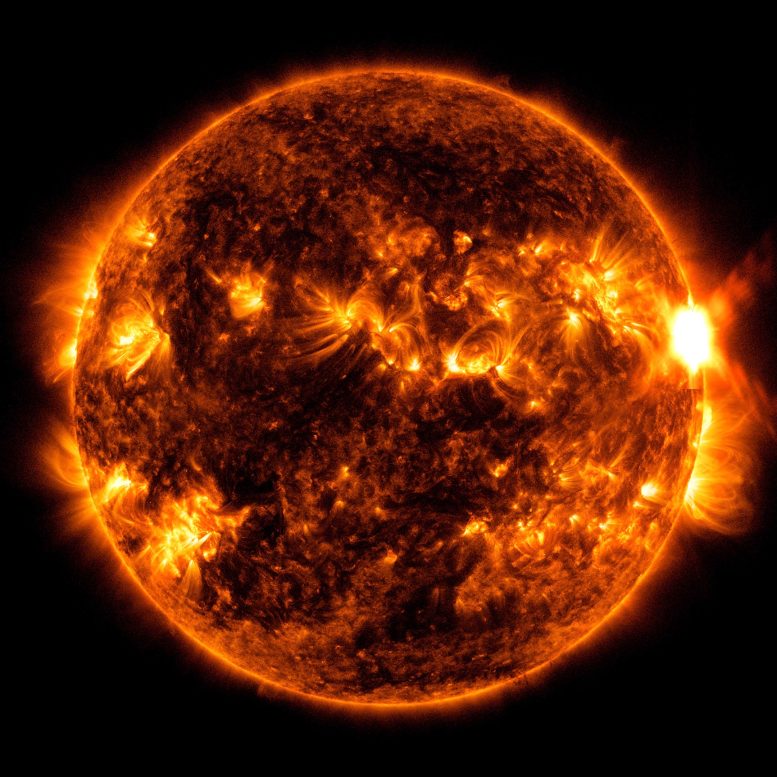
NASA’s Solar Dynamics Observatory captured this image of a solar flare – as seen in the bright flash on the right – on August 5. 2023. The image shows a subset of extreme ultraviolet light that highlights the extremely hot material in flares and which is colorized in red and orange. Credit: NASA/SDO
The Sun emitted a strong solar flare, peaking at 6:21 p.m. EDT on August 5, 2023. NASA’s Solar Dynamics Observatory, which watches the Sun constantly, captured an image of the event. This flare is classified as an X1.6 flare. X-class denotes the most intense flares, while the number provides more information about its strength.
Solar flares are sudden and intense bursts of energy and radiation originating from the Sun’s surface and outer atmosphere. They’re closely related to magnetic activity on the Sun, and when the magnetic energy that has built up in the solar atmosphere is suddenly released, it can produce a solar flare.
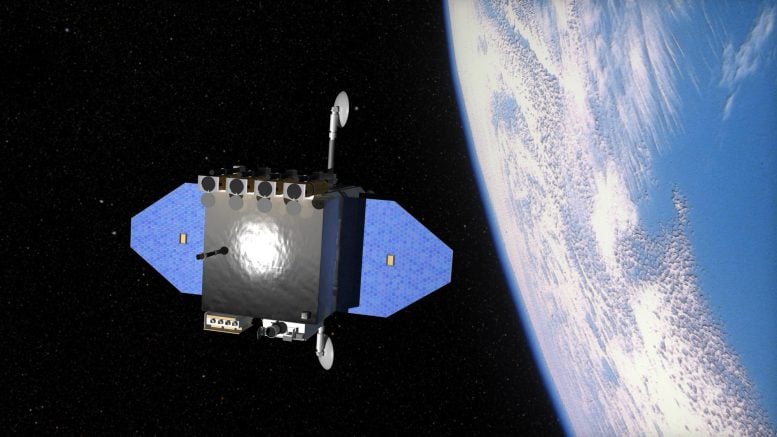
Artist’s concept image of NASA’s Solar Dynamics Observatory (SDO) satellite orbiting Earth. Credit: NASA
Here’s a more detailed look at solar flares and how they are measured:
What are Solar Flares?
Solar flares occur in the Sun’s outer atmosphere, releasing energy across the entire electromagnetic spectrum, from radio waves to x-rays and gamma rays. The energy emitted in a solar flare can be equivalent to millions of 100-megaton hydrogen bombs exploding at the same time.
The flares can affect space weather, and intense flares can disrupt satellite communications, navigation systems, and even power grids on Earth. They also create beautiful auroras near the polar regions.
How Are Solar Flares Measured?
Solar flares are categorized according to their brightness in the x-ray wavelengths. The classes are designated by a letter followed by a number. Here’s a brief overview:
- A-Class Flares: These are the weakest type of solar flares, barely detectable.
- B-Class Flares: Still considered relatively weak and often go unnoticed.
- C-Class Flares: These flares can have some minor effects on Earth’s space weather.
- M-Class Flares: These are considered medium-strength flares and can cause brief radio blackouts at the polar regions.
- X-Class Flares: These are the most substantial and most intense flares. They can cause significant disturbances in the Earth’s magnetosphere and affect various systems on Earth.
The number that follows the letter represents a logarithmic scale of intensity, with each number representing a tenfold increase in energy output. So, an X2 flare is twice as intense as an X1 flare, an M5 flare is five times as intense as an M1 flare, and so on.
Observatories like NASA’s Solar Dynamics Observatory and the NOAA’s Space Weather Prediction Center continuously monitor the Sun’s activity, using various instruments and techniques to detect and measure solar flares. These include x-ray detectors, radio wave receivers, and other sensors that can detect changes across various parts of the electromagnetic spectrum.

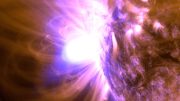
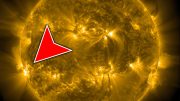
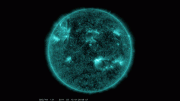
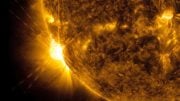
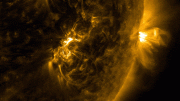
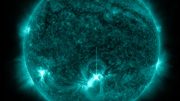
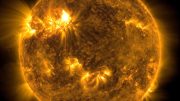
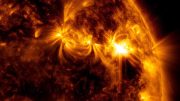
Be the first to comment on "Sun’s Fury Unleashed: NASA’s Solar Dynamics Observatory Captures Intense X1.6 Solar Flare"